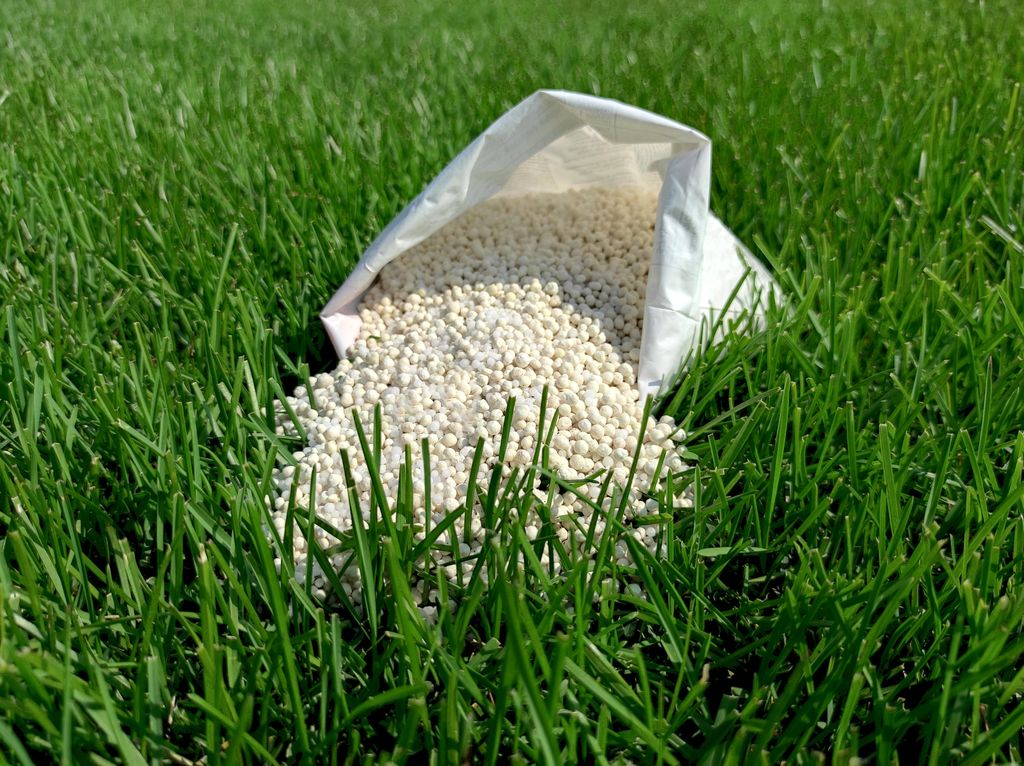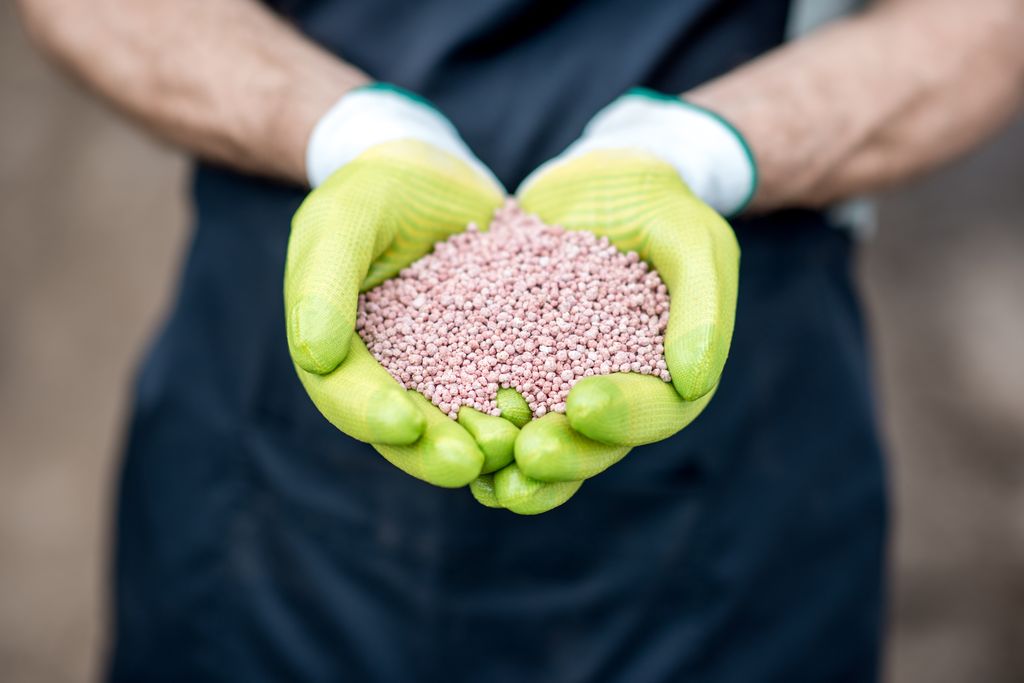- The Importance of Nitrogen in Lawn Fertilization
- Understanding Nitrogen as an Essential Nutrient
- The Importance of Nitrogen in Your Lawn
- How Nitrogen Affects Lawn Fertilization
- Key Benefits of Nitrogen in Lawn Health
- Impact of Nitrogen on Grass Color and Density
- Types of Nitrogen Sources for Lawn Fertilization
- Organic vs. Synthetic Nitrogen Sources
- Slow-Release vs. Quick-Release Nitrogen Options
- Determining the Right Amount of Nitrogen for Lawn Fertilization
- Soil Testing: Assessing Nitrogen Levels
- Recommended Nitrogen Application Rates for Different Grass Types
- Timing Your Lawn Fertilization with Nitrogen
- Best Times to Apply Nitrogen Fertilizer
- Seasonal Considerations for Optimal Lawn Growth
- Signs of Nitrogen Deficiency in Lawn Fertilization
- Identifying Symptoms of Nitrogen Deficiency
- Remedies for Nitrogen Deficiency in Your Lawn
- Environmental Considerations in Lawn Fertilization
- Impact of Nitrogen Runoff on Ecosystems
- Sustainable Practices for Responsible Lawn Fertilization
- Common Myths About Nitrogen in Lawn Fertilization
- Debunking Misconceptions About Nitrogen Use
- Final Insights
- F.A.Q
One Saturday morning, I decided it was time to revitalize my lackluster lawn after envying my neighbor’s vibrant grass.
After researching, I discovered the importance of nitrogen in lawn fertilization and picked up a nitrogen-rich fertilizer.
Weeks later, my lawn transformed into the lush, green paradise I had hoped for, becoming the envy of the neighborhood.
This post contains affiliate links. As an Amazon Associate, I earn from qualifying purchases at no additional cost to you.
The Importance of Nitrogen in Lawn Fertilization
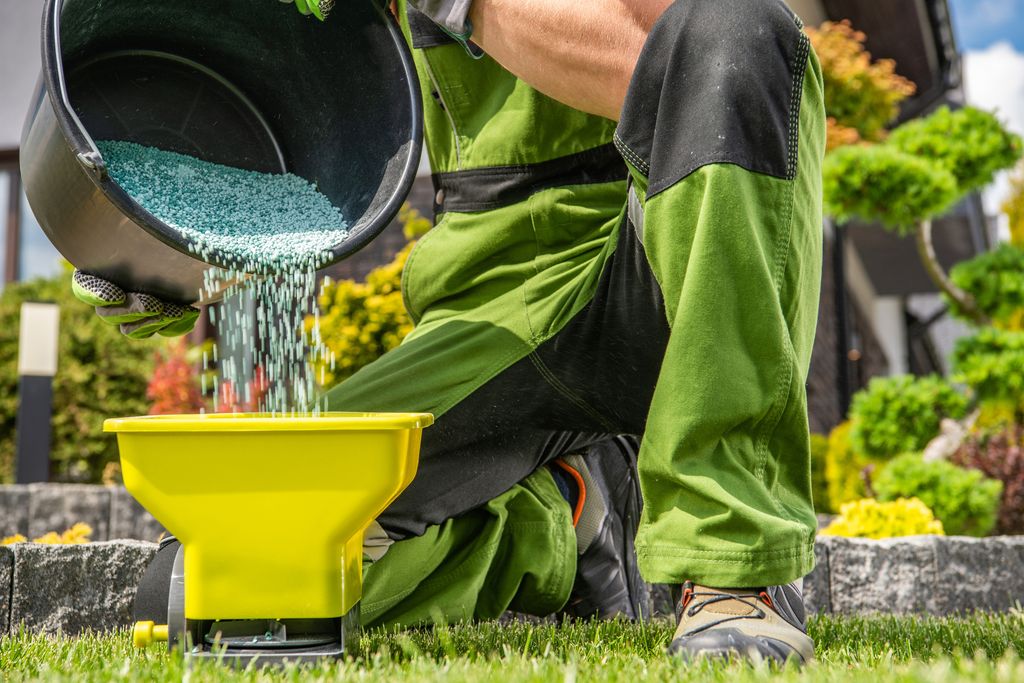
When I first started caring for my lawn, I quickly learned that nitrogen is a game-changer in lawn fertilization. Nitrogen promotes lush, green growth, which is what every homeowner dreams of. When I applied a nitrogen-rich fertilizer for the first time, I was amazed at how quickly my grass perked up.
Why Nitrogen Matters
Nitrogen is an essential nutrient for plants, and it helps with the following:
- Leaf Growth: Nitrogen is key for producing chlorophyll, the green pigment in plants that helps them absorb sunlight.
- Vigor: A lawn rich in nitrogen grows faster and looks healthier.
- Disease Resistance: A well-nourished lawn can better fend off pests and diseases.
I remember a summer when my neighbor’s lawn was looking exceptionally vibrant. Curious, I asked him what his secret was. He simply replied, “I make sure to keep my nitrogen levels up.” It turned out he used a slow-release nitrogen fertilizer that kept his lawn green all season long.
How to Apply Nitrogen
Type of Fertilizers:
- Granular: Easy to apply and lasts longer. I love using this type since it feeds my lawn gradually.
- Liquid: Quick results but requires more frequent applications.
Application Frequency:
- Early Spring: Start with a high-nitrogen fertilizer.
- Late Spring: Follow up with another round to keep growth going.
Pro Tips: Always follow the recommended rates on the fertilizer package. Over-fertilizing can harm your lawn and the environment. And don’t forget to water your lawn after applying fertilizer; it helps the nutrients soak in better!
By ensuring your lawn has adequate nitrogen, you’re setting the stage for a beautiful, healthy yard that will be the envy of the neighborhood.
Understanding Nitrogen as an Essential Nutrient
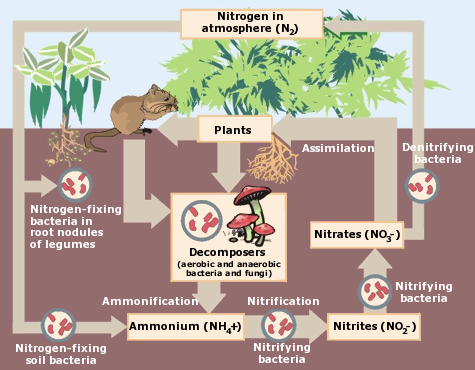
When it comes to lawn care, one nutrient often stands out: nitrogen. It plays a crucial role in the health and growth of grass. I remember the first time I learned about nitrogen; my lawn was struggling, and a neighbor suggested I check my soil’s nutrient levels. After some research, I realized nitrogen was key to achieving that lush, green grass I admired.
The Importance of Nitrogen
Nitrogen is essential for several reasons:
- Promotes Growth: Nitrogen helps grass grow faster and become denser, making your lawn look fuller.
- Color Boost: It’s a major player in chlorophyll production, which is what gives grass its vibrant green color.
- Leaf Development: A good nitrogen level encourages healthy leaf development, which is critical for photosynthesis.
Signs Your Lawn Needs Nitrogen
If you’re unsure whether your lawn needs more nitrogen, here are some signs to look for:
- Pale or Yellowing Grass: If your lawn is losing its color, nitrogen might be the missing ingredient.
- Slow Growth: If the grass is slow to grow or patchy, it’s time to check those nutrient levels.
- Thin or Sparse Patches: Areas that look less lush may need some nitrogen love.
Pro Tips: I found that testing my soil before applying any nitrogen fertilizer made a huge difference. This way, I could determine exactly how much nitrogen my lawn needed, avoiding the risk of over-fertilizing, which can lead to problems like burning the grass or promoting disease.
Choosing a Nitrogen Source
There are various ways to add nitrogen to your lawn:
- Synthetic Fertilizers: These can deliver quick results, but they require careful application.
- Organic Options: Consider using compost or well-rotted manure. They release nitrogen slowly and improve soil health over time.
Finding the right balance of nitrogen can transform your lawn from dull to dazzling. With a little care and attention, you’ll be on your way to that beautiful, green space you’ve always wanted!
The Importance of Nitrogen in Your Lawn

When I started my journey into lawn care, I quickly learned that nitrogen is like a superhero for plant growth. It’s a crucial nutrient that helps grass and plants thrive. Without it, your lawn can become weak, yellow, and lackluster. I remember one summer, my lawn was looking patchy, and I realized I had neglected to fertilize. A quick dose of nitrogen-rich fertilizer turned things around in just a few weeks!
How Nitrogen Benefits Your Lawn
- Promotes Growth: Nitrogen is essential for the production of chlorophyll, the green pigment in plants. More chlorophyll means your grass can photosynthesize better, leading to a lush, green lawn.
- Boosts Leaf Development: Nitrogen encourages the growth of healthy leaves. The more leaves your grass has, the better it can capture sunlight and nutrients.
How to Apply Nitrogen
- Fertilizers: Use a balanced fertilizer with nitrogen as one of the key ingredients. Look for options labeled with a high first number in the N-P-K ratio (like 20-5-10).
- Timing: I’ve found that spring and early fall are the best times to apply nitrogen. This ensures your lawn gets the boost it needs during its peak growing seasons.
Pro Tip: Always follow the recommended application rates on the fertilizer package. Over-fertilizing can burn your grass and lead to environmental issues.
Signs of Nitrogen Deficiency
- Yellowing Leaves: If you notice your grass turning yellow, it may be time to check your nitrogen levels.
- Stunted Growth: Grass that isn’t growing as fast as it should might need a nitrogen boost.
By understanding the role of nitrogen in plant growth and development, you can take proactive steps to ensure your lawn stays vibrant and healthy all year long.
How Nitrogen Affects Lawn Fertilization

When it comes to lawn care, nitrogen is a key player in achieving that lush, green lawn we all crave. It’s like the magic ingredient that helps your grass grow strong and healthy. My own experience with nitrogen-rich fertilizers has taught me just how transformative they can be.
The Role of Nitrogen
Nitrogen is an essential nutrient that promotes leaf growth, making your grass blades thicker and greener. I remember the first time I applied a nitrogen-based fertilizer to my lawn. Within a week, I could see a noticeable difference. The grass looked revitalized, and I couldn’t help but feel a sense of pride walking through my yard.
Ideal Timing for Nitrogen Application
Timing is everything when it comes to applying nitrogen. Early spring and early fall are the best times to fertilize. During these seasons, your grass is actively growing, making it easier for the nitrogen to be absorbed. I’ve found that fertilizing in the late afternoon or early evening works wonders, as the cooler temperatures help prevent the fertilizer from burning the grass.
Choosing the Right Fertilizer
Not all fertilizers are created equal. Here’s a quick breakdown of types you might consider:
- Granular Fertilizers: Slow-release options that feed your lawn over time. Great for beginners!
- Liquid Fertilizers: Fast-acting and perfect for a quick boost but require more frequent applications.
- Organic Fertilizers: These can enrich the soil while promoting a healthy ecosystem in your yard.
Pro Tips: Always read the label and look for the nitrogen content, usually displayed as the first number in a series (e.g., 20-5-10). Higher nitrogen levels mean more vigorous growth.
Potential Issues with Nitrogen
While nitrogen is essential, too much can lead to problems like excessive growth and a weak root system. I learned this the hard way when I over-fertilized one season, resulting in a lawn that was beautiful but struggled during drought conditions. Finding the right balance is crucial for long-term health.
Incorporating nitrogen into your lawn care routine can make a world of difference, and with a little attention, you’ll be on your way to a vibrant lawn that’s the envy of the neighborhood!
Key Benefits of Nitrogen in Lawn Health
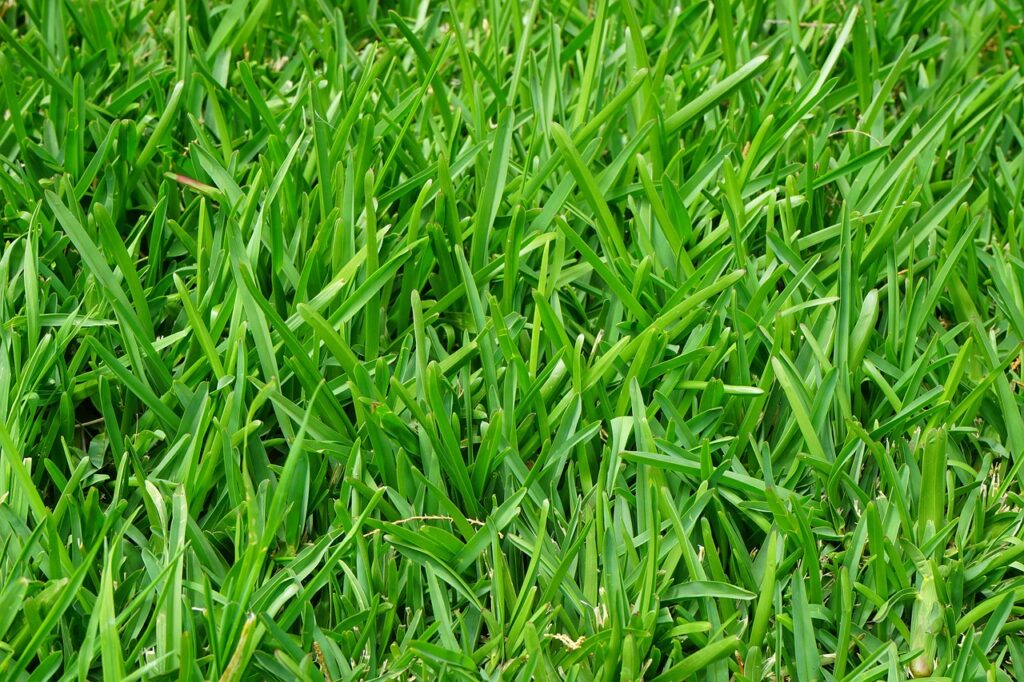
Promotes Healthy Growth
One of the primary reasons I swear by nitrogen in lawn care is its ability to promote healthy, lush growth. When I first started caring for my lawn, I noticed patches that just wouldn’t fill in. After a bit of research, I learned that nitrogen is a vital nutrient that helps grass grow vigorously. Now, every spring, I make it a point to apply a nitrogen-rich fertilizer, and the results speak for themselves. My lawn transforms into a vibrant green carpet that’s the envy of the neighborhood!
Enhances Color
You wouldn’t believe how much nitrogen can enhance the color of your lawn. I remember one summer when I decided to skip fertilizing. My grass looked dull and lifeless, and I regretted it every day I mowed. After that experience, I committed to using nitrogen fertilizers, and the difference was dramatic. A healthy dose of nitrogen turns my grass into a rich emerald hue, making it look lush and inviting.
Increases Resistance to Pests and Disease
A nitrogen-rich lawn also tends to be more resilient against pests and diseases. I once faced an invasion of grubs that made my lawn look like a battlefield. After applying a nitrogen fertilizer, not only did my grass bounce back, but I also noticed a decline in pest activity. Healthy grass can better withstand threats, making lawn care a little easier.
Pro Tips
When applying nitrogen, timing is crucial. I learned the hard way that late-season applications can lead to winter kill. Aim for early spring and early fall to give your lawn the best chance to thrive! Additionally, consider using a slow-release nitrogen fertilizer. It provides nutrients over an extended period, ensuring your grass gets what it needs without overwhelming it all at once.
Impact of Nitrogen on Grass Color and Density
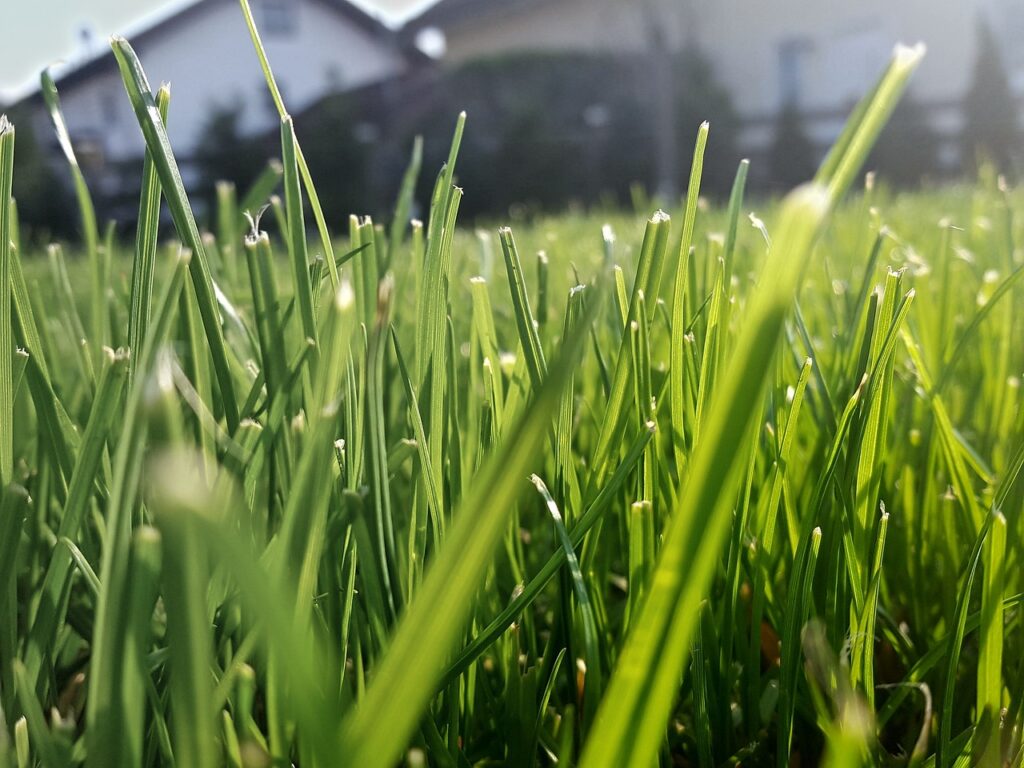
When it comes to lawn care, I can’t stress enough how vital nitrogen is for achieving that lush, green look we all crave. My own experience shows that when I started incorporating nitrogen-rich fertilizers, the transformation was remarkable. The grass turned a vibrant green, and the density was off the charts.
Why Nitrogen Matters
Nitrogen is one of the key nutrients that grass needs to thrive. It plays a big role in photosynthesis, which is how grass converts sunlight into energy. The more nitrogen you provide, the more chlorophyll your grass will produce, leading to a richer color. Not only does it enhance the visual appeal of your lawn, but it also strengthens the grass, making it more resilient against disease and stress.
Pro Tips:
- Test your soil before applying nitrogen. This way, you can see how much is needed for your specific lawn type.
- Choose a slow-release nitrogen fertilizer for longer-lasting effects.
The Balance is Key
While nitrogen is essential, too much can lead to problems like excessive growth and disease susceptibility. I remember one summer, I went a little overboard with my fertilizer, and my lawn went from a beautiful green to a jungle!
Here are some signs of nitrogen deficiency:
- Yellowing grass
- Weak, thin blades
- Poor growth
Conversely, if you notice:
- Oversized growth that’s hard to manage
- A decline in grass health
It might be time to dial back the nitrogen. Keeping a balanced approach can lead to a healthy, thick lawn that feels great underfoot.
Timing Your Application
Timing is crucial. I’ve found that applying nitrogen in early spring and again in late summer works best for my lawn. This gives the grass a boost when it’s waking up and again when it’s preparing for the dormant season. Make sure to water your lawn after applying to help the nitrogen penetrate the soil effectively.
Types of Nitrogen Sources for Lawn Fertilization
When it comes to keeping your lawn lush and green, understanding the types of nitrogen sources for fertilization can make a world of difference. I’ve tried a few different options over the years, and I want to share what I’ve learned.
Organic Nitrogen Sources
Organic fertilizers are derived from natural materials, and they tend to release nutrients slowly. Here are a few I’ve used:
- Compost: I often make my own compost from kitchen scraps and yard waste. It’s a great source of nutrients, and it enriches the soil, promoting healthy grass growth.
- Blood Meal: This is a high-nitrogen option that I’ve occasionally used in small amounts. It’s potent, so it’s best to apply it carefully to avoid burning your lawn.
Inorganic Nitrogen Sources
Inorganic fertilizers are synthetic and provide a quick boost of nutrients. I remember the first time I tried a granulated fertilizer and was amazed at how quickly my lawn perked up. Here are some common types:
- Urea: This is one of the most popular nitrogen sources. I’ve seen it work wonders in my yard during the growing season.
- Ammonium Nitrate: This option is effective and can be especially useful in cooler weather when grass growth slows down.
Slow-Release Fertilizers
For those who want a long-term solution, slow-release fertilizers allow for gradual absorption of nutrients. I learned that this type of fertilizer requires less frequent applications, which is a lifesaver for my busy schedule.
Pro Tips: Always read the labels and follow the recommended application rates. Over-fertilizing can lead to issues like lawn burn or excess growth, which means more mowing!
Organic vs. Synthetic Nitrogen Sources
When it comes to nitrogen sources for our lawns, I’ve learned that choosing between organic and synthetic options can be a game-changer. Both have their pros and cons, but the right choice often depends on what you’re aiming for.
Organic Nitrogen Sources
Organic nitrogen sources, like compost, fish emulsion, and blood meal, enrich the soil over time. I remember when I first started using compost. I’d pile up kitchen scraps and yard waste, and after some time, I had this rich, dark gold that made my lawn thrive. It’s amazing how a little patience pays off.
Benefits of Organic Options:
- Soil Health: They improve soil structure and encourage beneficial microbes.
- Slow Release: Nutrients are released gradually, which is great for long-term growth.
- Eco-Friendly: Reduces chemical runoff and promotes sustainability.
Synthetic Nitrogen Sources
On the flip side, synthetic nitrogen sources, such as urea and ammonium nitrate, work quickly. I once applied a synthetic fertilizer before a big family gathering and noticed the difference in just a few days. The lawn looked vibrant and lush, perfect for the occasion.
Benefits of Synthetic Options:
- Fast Acting: Quick green-up when your lawn needs it urgently.
- Cost-Effective: Usually cheaper upfront compared to organic options.
- Targeted Application: Can provide specific nutrient ratios tailored for your lawn.
Pro Tips:
- If you opt for organic, try blending it with some synthetic options for a balanced approach.
- Always test your soil first! Understanding your lawn’s nutrient needs will guide you to the right nitrogen source.
- Watch the weather! Applying nitrogen before a rain can help it absorb better, especially for synthetic fertilizers.
In my experience, the best results come from experimenting and finding what works for your lawn. Happy gardening!
Slow-Release vs. Quick-Release Nitrogen Options
When it comes to lawn care, choosing the right nitrogen fertilizer can make a big difference in how your grass looks. I’ve tried both slow-release and quick-release options, and each has its own perks and quirks.
Quick-Release Nitrogen
Quick-release nitrogen fertilizers are like a burst of energy for your lawn. They work fast, giving your grass an immediate boost. I remember when I was trying to revive my lawn after a harsh winter. I used a quick-release nitrogen option, and within days, the green color returned, and I could almost see the grass grow.
However, one of the downsides is that because they release nutrients quickly, they can also wash away with rain or watering. This means you might need to apply them more often, typically every 4-6 weeks during the growing season.
Pro Tip: If you go for quick-release, try to apply it when the weather forecast is clear for a few days to prevent runoff.
Slow-Release Nitrogen
On the other hand, slow-release nitrogen fertilizers are more like a long-term investment. They feed your lawn gradually over several weeks or even months. I’ve found that using a slow-release option helps keep my lawn consistently healthy without the need for frequent applications. I normally apply it in early spring, and it helps the grass stay lush throughout the summer.
This option is also less prone to leaching, so you get a better bang for your buck. Typically, you only need to apply it every 8-12 weeks, which is great for busy homeowners like me.
Pro Tip: Look for slow-release options that are coated or specially formulated for extended feeding to maximize their effectiveness.
Summary
Here’s a quick rundown:
- Quick-Release:
- Fast-acting
- Short-term
- Requires more frequent applications
- Slow-Release:
- Long-lasting
- Steady feed
- Less maintenance needed
Choosing the right type really depends on your lawn goals and how much time you want to invest in lawn care.
Determining the Right Amount of Nitrogen for Lawn Fertilization
When it comes to lawn care, figuring out the right amount of nitrogen for fertilization can feel overwhelming. Too little nitrogen means your grass might look pale and weak, while too much can lead to a lush, but unhealthy carpet of grass that’s more susceptible to diseases.
Understanding Nitrogen Needs
First off, it’s essential to know that the nitrogen requirements can vary based on the type of grass you have. For instance, cool-season grasses like Kentucky bluegrass generally need 1-1.5 pounds of nitrogen per 1,000 square feet each year. However, warm-season grasses like Bermuda typically need a bit more — around 2-3 pounds per 1,000 square feet.
Testing Your Soil
One of the best practices I adopted is soil testing. A simple soil test can offer insights into your lawn’s nutrient levels, including nitrogen. Most local extension offices offer testing services, and it’s worth the small investment. After I tested my soil, I discovered it had sufficient phosphorus and potassium but was lacking in nitrogen. Armed with that information, I was better able to choose the right fertilizer.
Timing Your Application
Applying nitrogen at the right time is crucial. For cool-season grasses, early spring and fall are the best times for application. I remember the first time I fertilized my lawn in late spring; the grass grew rapidly, but I had to mow every few days! This taught me to balance growth with timing.
Pro Tips:
- Use a slow-release nitrogen fertilizer to provide a steady nutrient supply.
- Water after fertilization for better absorption.
- Keep an eye on rainfall; too much can wash away nitrogen.
By understanding your lawn’s specific needs, you can provide the right amount of nitrogen and create a vibrant, healthy yard you’ll love.
Soil Testing: Assessing Nitrogen Levels
Understanding the nitrogen levels in your soil can dramatically impact how your lawn thrives. I remember when I first moved into my home and saw patches of brown grass scattered across my yard. It looked sad, to say the least. After some research, I learned that the key to a lush, green lawn often starts beneath the surface.
Why Nitrogen Matters
Nitrogen is a vital nutrient that promotes healthy growth in grass. It’s like the fuel for your lawn, helping it grow thicker and greener. Without sufficient nitrogen, your grass may appear yellow or stunted, which is what I experienced early on.
How to Test Nitrogen Levels
Testing your soil for nitrogen levels can be simple. Here’s how I did it:
- Gather Supplies: You’ll need a soil test kit, which you can find at local garden centers or online.
- Collect Samples: Take samples from different spots in your yard. I went for about six to eight inches deep and mixed them in a clean bucket.
- Send it Off: Follow the kit’s instructions to send your sample to a lab, or you can use a DIY test kit at home for quicker results.
Interpreting Results
Once you get your results back, you’ll know if your lawn is nitrogen-deficient. Typically, the results will indicate whether you need to add nitrogen or if your soil is already well-balanced.
Pro Tips
- Timing is Everything: I’ve found that testing in early spring or fall yields the best results, as this is when your lawn is preparing for growth.
- Follow Up: If you need to add nitrogen, consider using a slow-release fertilizer to provide a steady supply. I’ve seen my lawn respond beautifully after a good application!
By taking the time to assess your soil’s nitrogen levels, you’re setting up your lawn for success. A little knowledge goes a long way in keeping your yard the envy of the neighborhood!
Recommended Nitrogen Application Rates for Different Grass Types
When it comes to lawn care, nitrogen plays a vital role in keeping our grass lush and green. However, the amount you need to apply can vary depending on the type of grass you have in your yard. Here’s a quick guide based on my experience!
Cool-Season Grasses
These types of grasses thrive in the northern climates. They usually need:
- Kentucky Bluegrass: 2 to 4 pounds of nitrogen per 1,000 square feet annually.
- Perennial Ryegrass: 3 to 5 pounds of nitrogen per 1,000 square feet annually.
- Tall Fescue: 4 to 6 pounds of nitrogen per 1,000 square feet annually.
I remember when I first moved into my house and planted Kentucky Bluegrass. I followed the recommended rate and couldn’t believe how vibrant it looked!
Warm-Season Grasses
If you’re in a warmer area, you’ll likely have warm-season grasses needing different rates:
- Bermudagrass: 3 to 5 pounds of nitrogen per 1,000 square feet annually.
- Zoysiagrass: 2 to 4 pounds of nitrogen per 1,000 square feet annually.
- Buffalograss: 1 to 2 pounds of nitrogen per 1,000 square feet annually.
I had a patch of Bermudagrass in my backyard, and I noticed a huge difference in growth after I adjusted the nitrogen rates.
Pro Tips
When applying nitrogen, make sure to split your application into two or three sessions throughout the growing season. This helps prevent burning the grass and promotes healthy growth. Also, I’ve found that doing it right before a rainfall or watering afterward can make a big difference in how well the nutrients soak in.
Remember to always test your soil’s nutrient levels before applying any fertilizers. Each lawn is unique, and knowing what your grass truly needs can make all the difference!
Timing Your Lawn Fertilization with Nitrogen
When it comes to lawn care, timing your fertilization, especially when using nitrogen, is crucial. From my experience, I’ve found that applying nitrogen at the right times can make a visible difference in the health and vibrancy of your lawn.
Best Times to Fertilize
Generally, the best times to apply nitrogen are in the spring and fall. Here’s a simple breakdown:
- Spring (April to June): This is when your lawn starts waking up from winter dormancy. The grass begins to grow actively, and a nitrogen boost can promote lush, green growth.
- Fall (September to November): This is equally important. As your grass prepares for winter, a good dose of nitrogen helps strengthen the roots and ensures that your lawn thrives come spring.
Pro Tips:
- Soil Temperature: Check the soil temperature before fertilizing in spring. Aim for around 55°F for optimal grass growth.
- Type of Grass: Consider your grass type. Cool-season grasses like fescue benefit from fall fertilization, while warm-season grasses like Bermuda thrive with spring applications.
How to Apply Nitrogen
When applying nitrogen, I prefer using a spreader for even distribution. Here’s how I do it:
- Choose the Right Product: Look for a fertilizer with a high nitrogen content. I usually go for a slow-release formula to avoid burning my lawn.
- Water Before Application: Watering the lawn a day before helps the grass absorb nutrients better.
- Follow Up with Water: After fertilization, give your lawn a good watering to help the nitrogen penetrate the soil.
Common Mistakes to Avoid
- Fertilizing During Drought: I learned this the hard way. Fertilizing when the grass is stressed can do more harm than good.
- Over-fertilization: More isn’t always better. Stick to the recommended rates to avoid a patchy lawn.
By paying attention to timing and method, I’ve seen my lawn flourish like never before!
Best Times to Apply Nitrogen Fertilizer
Timing is everything when it comes to applying nitrogen fertilizer to your lawn. I’ve learned through trial and error that the right timing can make a big difference in the health and appearance of my grass.
Spring Application
Applying nitrogen in the spring is ideal for kickstarting your lawn’s growth after winter. I usually target late March to early April for my first application. At this time, the soil has warmed up, and the grass is starting to green up. I remember the first year I applied it too early, and the grass just sat there, not growing. Waiting until the right moment made all the difference.
Pro Tips:
- Use a slow-release nitrogen fertilizer for a gradual nutrient supply.
- Look for a nitrogen percentage of around 30% to ensure strong growth.
Summer Boost
During the hot summer months, your lawn may need additional nitrogen to recover from heat stress. I find that around mid-July is a good time for a second application. This helps the grass stay lush and green, even when the temperatures soar. Just make sure the grass isn’t too dry; watering before application can help.
Fall Feeding
Fall is another crucial time for nitrogen application. Late September to mid-October is perfect for preparing your lawn for winter. A good dose of nitrogen strengthens the roots and promotes healthy growth before the cold weather hits. I remember being amazed at how vibrant my lawn looked the following spring, all thanks to my fall fertilization efforts.
Timing Summary
| Season | Best Application Time |
|---|---|
| Spring | Late March to Early April |
| Summer | Mid-July |
| Fall | Late September to Mid-October |
Applying nitrogen fertilizer at these key times has transformed my lawn care routine. It’s amazing how a little planning goes a long way in keeping my grass looking lush and healthy!
Seasonal Considerations for Optimal Lawn Growth
Spring Awakening
As winter fades, your lawn will start to wake up. It’s the perfect time to assess the condition of your grass and prepare for the growing season. I remember the first spring after I moved into my house; the lawn was a patchy mix of green and brown. I took a moment to breathe in the fresh air and decided to give it a little TLC.
Pro Tips:
- Aerate: This helps air, water, and nutrients reach the grass roots.
- Fertilize: A slow-release nitrogen fertilizer can kickstart growth.
Summer Thriving
By summer, your lawn is in full swing. It’s essential to keep it hydrated during those hot months. I learned the hard way that not all grass types handle heat equally. I had installed fescue, which requires regular watering. I set a schedule to water early in the morning or late in the evening to prevent evaporation.
Pro Tips:
- Mow High: Keeping your grass at a taller height helps it retain moisture.
- Water Deeply: Aim for about an inch of water per week, either from rainfall or irrigation.
Fall Preparation
As the leaves start to change, it’s time for fall maintenance. This is when I like to overseed my lawn to fill in any bare spots. I also apply a fall fertilizer, which sets the stage for strong roots come winter. My neighbor and I often spend weekends raking leaves, but instead of bagging them all, I shred and leave them on the lawn for added nutrients.
Pro Tips:
- Mulch Leaves: This enriches the soil as it decomposes.
- Final Mow: A last cut before winter helps prevent disease.
Winter Rest
When winter arrives, your lawn goes dormant, but that doesn’t mean you can ignore it. I find this time perfect for planning next year’s lawn care routine. I often spend evenings researching new grass varieties or lawn care products.
Pro Tips:
- Keep an Eye on Snow Mold: If you notice patches of dead grass, it could be a sign of snow mold.
- Plan Ahead: Use this downtime to map out your spring strategy, including aeration and fertilization timing.
Signs of Nitrogen Deficiency in Lawn Fertilization
As a homeowner who has spent countless weekends tending to my lawn, I’ve learned a thing or two about the telltale signs of nitrogen deficiency. It’s surprising how much the health of my grass can change just from a nutrient imbalance. Here’s what I’ve noticed over the years.
Yellowing Grass
One of the first signs I’ve seen is yellowing grass. If your once-vibrant green lawn starts turning a pale yellow, especially in the older leaves, it’s a clear indication that nitrogen levels are low. I remember when my front yard was the envy of the neighborhood, but one summer, it began to fade. After some research, I realized I hadn’t fertilized in a while, and once I applied a nitrogen-rich fertilizer, the difference was amazing.
Stunted Growth
Another sign is stunted growth. When I noticed that my grass was not growing as tall or lush as it used to, I had to act. A quick check of the soil revealed a nitrogen deficiency. Adding the right fertilizer not only revived my lawn but also made it bounce back faster than I anticipated.
Poor Color
Nitrogen deficiency often leads to poor color consistency across the lawn. I’ve had patches that looked almost golden, while others remained a rich green. To remedy this, I applied a balanced fertilizer that specifically targeted nitrogen levels, and soon, my lawn achieved an even color throughout.
Thin Grass
Lastly, if your grass feels thin and fragile underfoot, it might be time to check your nitrogen levels. I remember feeling like I was walking on crunchy cereal instead of a lush expanse when my lawn was lacking nitrogen.
Pro Tips: Regular soil testing can guide your fertilization efforts, ensuring your grass gets the nutrients it craves. Consider using slow-release nitrogen fertilizers, as they provide a steady supply of nutrients over time, keeping your lawn healthy and vibrant without the guesswork.
Identifying Symptoms of Nitrogen Deficiency
Understanding nitrogen deficiency is crucial for maintaining a healthy lawn. One day, while strolling through my yard, I noticed some patches that were turning a sickly yellow. It was a clear sign that something wasn’t right.
Color Changes
One of the first symptoms I spotted was the yellowing of the grass. Instead of the rich green I was used to, my lawn looked almost pale in some areas. The older leaves often show this yellowing first, while new growth may still retain some green. If you notice this, it’s time to investigate further.
- Yellowing of older leaves: Pay attention to the older grass blades. If they’re losing their color, it’s a red flag.
- Overall pale appearance: A lawn that generally lacks vibrancy could indicate low nitrogen levels.
Growth Patterns
Another noticeable change was the grass’s growth pattern. My lawn started growing slower than usual, and it didn’t bounce back after mowing like it used to. Instead of lush, thick blades, I was left with a sparse appearance.
- Reduced growth rate: If you’re mowing less frequently than before, it may be due to nitrogen deficiency.
- Thin and sparse grass: Areas of your lawn may feel more bare, almost like they’re struggling to fill in.
Other Symptoms
In addition to color changes and growth patterns, I’ve learned to watch for more subtle signs such as:
- Increased weed growth: Weeds love to take over spaces where grass struggles. If you see more weeds than usual, it might be time to check your nitrogen levels.
- Brittleness: Grass that snaps easily when bent can indicate nutrient stress.
Pro Tips: If you suspect nitrogen deficiency, consider testing your soil. A simple soil test can help you determine exactly what’s lacking. Based on the results, adding a nitrogen-rich fertilizer can rejuvenate your lawn and bring back its vibrant color.
Remedies for Nitrogen Deficiency in Your Lawn
When I first noticed my lawn turning a shade of yellowish-green, I knew I had a problem. After some research, I learned that nitrogen deficiency was likely the culprit. Nitrogen is essential for promoting lush, green growth, and without it, your lawn can look sad and unhealthy. Here’s how to tackle this issue based on my experience and what I’ve found helpful.
Signs of Nitrogen Deficiency
Keep an eye out for these common signs in your lawn:
- Yellowing leaves, especially older grass blades
- Stunted growth
- Sparse or thin patches
- Weeds thriving, while your grass struggles
Quick Fixes for Nitrogen Deficiency
Once I recognized the signs, I set out to remedy the situation. Here’s what worked for me:
Fertilizers: I opted for a nitrogen-rich fertilizer. Look for ones with a high first number in the N-P-K ratio (e.g., 30-0-0) to ensure you’re getting enough nitrogen.
Organic Options: If you prefer a more natural approach, I recommend using compost or well-rotted manure. They not only provide nitrogen but also improve overall soil health.
Grass Clippings: After mowing, I leave the grass clippings on the lawn. This method not only recycles nutrients but also adds nitrogen back into the soil as the clippings decompose.
- Coffee Grounds: Another quirky but effective remedy I’ve tried is using coffee grounds. They’re rich in nitrogen and can be sprinkled directly onto the lawn.
Pro Tips: Test your soil before applying any treatments. A soil test can tell you exactly how much nitrogen your lawn needs, preventing over-fertilization. Timing is also crucial; the best time to fertilize for nitrogen deficiency is typically in early spring or fall when your grass is actively growing.
Adjusting your lawn care routine with these remedies can lead to a greener, healthier lawn. It’s amazing how a little extra attention can make such a difference!
Environmental Considerations in Lawn Fertilization
When it comes to lawn care, I’ve learned that being mindful of the environment is crucial, especially when fertilizing. Over-fertilization can lead to runoff, which pollutes our waterways. I remember a time when my neighbor had a beautiful lawn but didn’t think twice about how much fertilizer he used. After a heavy rain, we noticed the creek behind our homes turned a strange shade of green. It was a real eye-opener!
Choosing the Right Fertilizer
Not all fertilizers are created equal. I’ve found that organic fertilizers are often a better choice for the environment. They break down slowly and provide nutrients over time. Here’s a quick comparison:
| Fertilizer Type | Environmental Impact | Longevity |
|---|---|---|
| Synthetic | Higher runoff risk | Quick release |
| Organic | Lower runoff risk | Slow release |
Timing is Key
Timing your fertilization is just as important. I always aim for early spring and fall. During these times, grass is actively growing and can absorb nutrients efficiently. Fertilizing in the heat of summer? Not a great idea. I tried that once, and my lawn ended up burnt and stressed!
Pro Tips:
- Test your soil before applying any fertilizer. This will help you understand what nutrients your lawn really needs.
- Use a spreader to ensure even distribution, preventing patches of over-fertilized grass that can lead to waste and runoff.
Watering Wisely
After fertilizing, I make sure to water my lawn appropriately. Too much water can wash away the fertilizer, while too little means the roots won’t absorb it. I usually wait for about 24 hours before watering, allowing the fertilizer to settle in.
By being conscious of how we fertilize our lawns, we can create lush green spaces without harming the environment. Every small step counts!
Impact of Nitrogen Runoff on Ecosystems
Nitrogen runoff, often a result of over-fertilizing our lawns, can have serious consequences for local ecosystems. When rainwater washes excess nitrogen from our yards into nearby streams and rivers, it creates a chain reaction that can harm aquatic life and disrupt natural habitats. You might not think twice about that extra scoop of fertilizer, but it can lead to nutrient pollution that results in harmful algal blooms.
What Are Harmful Algal Blooms?
- Eutrophication: When nitrogen levels rise, water bodies can become overly nutrient-rich, leading to rapid algal growth.
- Oxygen Depletion: As algae die and decompose, they consume oxygen in the water, leading to “dead zones” where fish and other aquatic creatures can’t survive.
I remember the first time I saw a local pond covered in a thick layer of green algae. It was shocking to think that my lawn care choices might have contributed to that. Not only is it unsightly, but such blooms can also release toxins harmful to pets and humans.
How to Prevent Nitrogen Runoff
- Soil Testing: Understanding what your lawn truly needs is key. A simple soil test can help you apply the right amount of nutrients.
- Use Slow-Release Fertilizers: These fertilizers gradually release nutrients, reducing the risk of runoff.
- Timing Matters: Fertilize during dry seasons rather than right before heavy rains to minimize wash-off.
Pro Tips: Avoid fertilizing before a storm and consider planting grass or plants that require less fertilizer in the first place. Native plants often thrive on less nitrogen and can help maintain a healthy ecosystem.
By making mindful choices about lawn care, we can protect our water systems and the creatures that depend on them.
Sustainable Practices for Responsible Lawn Fertilization
When it comes to lawn care, I’ve learned that responsible fertilization is key to a healthy yard and a healthier planet. One of my favorite practices is using organic fertilizers. These are made from natural materials, like compost or manure, and they enrich the soil without the harsh chemicals found in many synthetic options.
Timing is Everything
Paying attention to when you fertilize can make a significant difference. I’ve found that applying fertilizer in the spring helps kickstart growth as the grass comes out of dormancy. However, a second application in the fall is just as important. This helps strengthen roots before winter sets in.
Soil Testing
Before you spread anything on your lawn, testing your soil is a game changer. I had no idea my soil was low in nitrogen until I took the time to test it. This way, I could apply the right amount of fertilizer and avoid oversaturating my lawn with unnecessary nutrients.
Smart Application Techniques
Even the way you apply fertilizer matters. I prefer using a spreader for even distribution, which prevents patches of burnt grass. Plus, I try to water my lawn after fertilizing. This helps the nutrients soak into the soil rather than run off into storm drains.
Pro Tips:
- Always follow the recommended guidelines for your chosen fertilizer.
- Consider adding mulch to your grass clippings – they can provide essential nutrients when you mow.
- Use a slow-release fertilizer so your lawn gets a steady supply of nutrients over time.
Alternative Options
If you’re looking to go the extra mile, I’ve found that planting cover crops or using natural amendments, like bone meal or fish emulsion, can enhance soil health. Not only do these practices reduce dependency on chemical fertilizers, but they also support a sustainable ecosystem in your yard.
Incorporating these sustainable practices into my lawn care routine has not only made my grass greener but also given me peace of mind knowing I’m doing my part for the environment.
Common Myths About Nitrogen in Lawn Fertilization
When it comes to lawn care, nitrogen is often the star of the show, but there are quite a few myths swirling around this essential nutrient. As someone who has spent countless weekends tending to my lawn, I’ve encountered these misconceptions firsthand.
Myth 1: More Nitrogen Equals a Greener Lawn
Many homeowners believe that dumping more nitrogen on their lawn will instantly turn it into a lush green paradise. I used to think this was true until my lawn started to look more like a jungle. Over-fertilizing can lead to nutrient imbalances, excessive growth, and even lawn diseases.
Myth 2: You Don’t Need to Test Your Soil
Another common myth is that soil testing isn’t necessary. I remember when I first started fertilizing, I skipped this step, thinking it was just an extra hassle. However, once I finally tested my soil, I discovered it was rich in nitrogen but lacking in potassium. A simple soil test can save you time and money by helping you apply the right nutrients tailored to your lawn’s needs.
Myth 3: All Nitrogen Sources Are the Same
Not all nitrogen is created equal! There are quick-release and slow-release nitrogen sources. The quick-release fertilizers give an instant boost but can lead to rapid growth and a higher risk of burning your grass. I’ve learned to favor slow-release options, which provide a more consistent nutrient supply over time.
Pro Tips:
- Always read the fertilizer label to understand the nitrogen content and release type.
- A good rule of thumb is to fertilize during the growing season, ideally in early spring and again in late summer, using a balanced approach.
By debunking these myths, you can create a healthier lawn that thrives season after season.
Debunking Misconceptions About Nitrogen Use
When it comes to lawn care, nitrogen often gets a bad rap. Many homeowners believe that more nitrogen equals a greener lawn. While nitrogen is crucial for healthy grass, oversupplying it can lead to problems. I learned this lesson the hard way after trying to make my lawn the envy of the neighborhood.
Nitrogen and Growth
Nitrogen is essential for plant growth because it helps in chlorophyll production. However, too much nitrogen can make your grass grow too fast, creating a dense lawn that becomes susceptible to pests and diseases. I remember a time when I was so eager to green up my lawn that I applied a nitrogen-heavy fertilizer multiple times in one season. While my grass grew lush, it also attracted unwanted insects that turned my lawn into a buffet.
Timing Matters
Another misconception is that nitrogen should be applied any time of year. In reality, the best time to fertilize your lawn with nitrogen depends on the type of grass you have. For cool-season grasses, early spring and fall are ideal. For warm-season grasses, late spring is best. I found that timing made a huge difference; my lawn thrived when I followed this guideline.
Pro Tips:
- Before applying nitrogen, always conduct a soil test to understand what nutrients are already present.
- Use slow-release fertilizers to provide consistent nourishment without overwhelming your grass.
The Right Amount
Understanding the right amount of nitrogen can be tricky. Instead of applying as much as possible, aim for a balanced approach. Many lawn care experts suggest applying about 1 pound of nitrogen per 1,000 square feet of lawn each growing season. I’ve noticed that my lawn has maintained better health and resilience since I started following this rule.
By clearing up these misconceptions about nitrogen use, you can cultivate a lush, healthy lawn while avoiding potential pitfalls.
Final Insights
As we’ve explored, nitrogen is not just a nutrient; it’s the lifeblood of a vibrant lawn. From promoting lush growth to enhancing color and resistance against pests, understanding how to effectively incorporate nitrogen into your lawn care routine can lead to stunning results.
Remember to test your soil to determine its specific needs, choose the right type of nitrogen fertilizer, and apply it at the optimal times throughout the seasons.
Don’t forget that moderation is key—over-fertilizing can do more harm than good. So, take the time to find the perfect balance for your lawn.
Now that you have the knowledge and tips to make your lawn thrive, it’s time to take action! Start by assessing your lawn’s current condition and planning your nitrogen applications accordingly.
Share your lawn care journey or any questions you might have in the comments below. Let’s cultivate beautiful, healthy yards together! Happy gardening!
F.A.Q
What is the role of nitrogen in lawn fertilization?
Nitrogen is a key nutrient that helps grass grow strong and healthy. It promotes lush green color and encourages rapid growth, making it essential for maintaining a beautiful lawn.
How does nitrogen benefit my lawn?
Using nitrogen fertilizer can lead to thicker grass, improved color, and overall better lawn health. It helps grass plants photosynthesize more efficiently, which boosts their growth and resilience against pests and diseases.
What fertilization techniques should I use to apply nitrogen?
You can apply nitrogen through granular or liquid fertilizers. It’s best to follow a schedule based on your grass type and climate. Generally, you should fertilize during the growing season when grass needs nutrients the most.
How does nitrogen contribute to soil health improvement?
Nitrogen helps improve soil health by promoting beneficial microorganisms that break down organic matter. A healthy soil environment supports root development and nutrient absorption, leading to a more robust lawn.
Can I optimize grass growth with nitrogen alone?
While nitrogen is crucial, it’s important to use a balanced approach with other lawn care nutrients like phosphorus and potassium. These nutrients work together to ensure healthy grass growth and overall lawn vitality.

